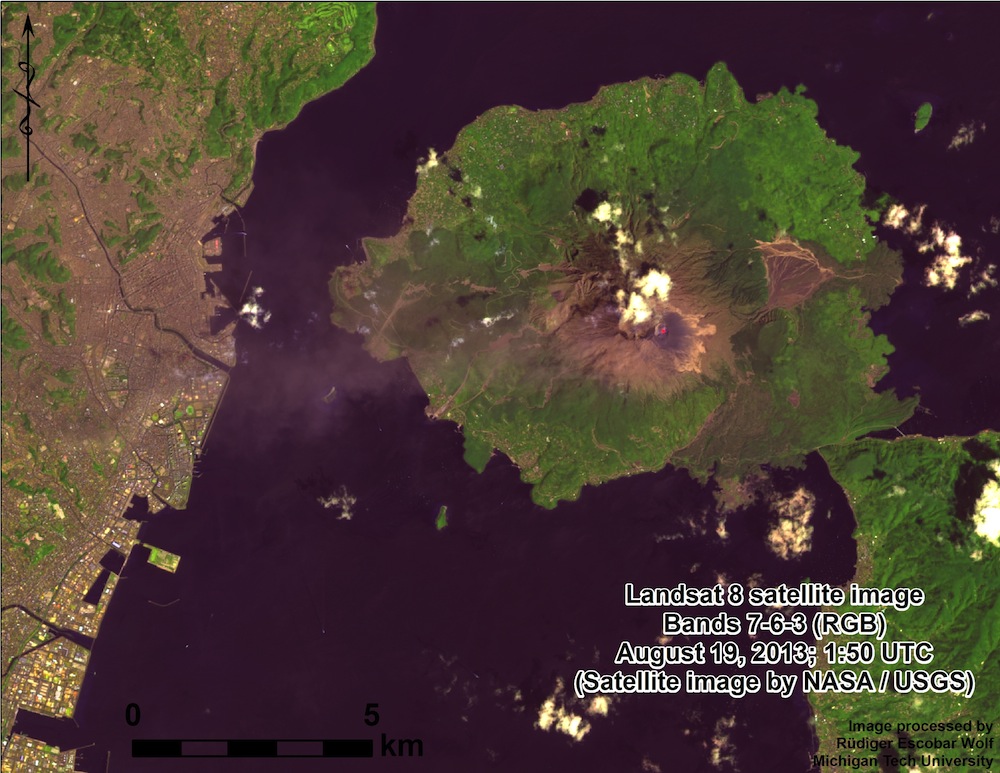
500th Eruption! Why Japan's Sakurajima Volcano Is So Active

Sakurajima volcano in Japan marked its 500th eruption of the year with an impressive pyrotechnic display on Sunday (Aug. 18) at 4:31 p.m. local time.
The island volcano unleashed a pyroclastic flow, which is a superheated mix of volcanic gas, ash and debris that can race down a slope at more than 200 mph (320 km/h), according to Japan's Meteorological Agency. The eruption tossed large volcanic cinders (pieces of hot lava) more than 5,900 feet (1,800 meters) from the volcano's Showa crater, one of two active craters atop Sakurajima.
Ash spurted more than 16,400 feet (5,000 m) into the sky, then drifted westward toward the nearby city of Kagoshima, raining down on residents who walked around town carrying umbrellas and wearing masks for protection, according to news reports.
Residents living near Sakurajima were prepared for fallout. On the island, children are already required to wear hardhats on their walks to school, said David Fee, a geophysicist with the Alaska Volcano Observatory and the University of Alaska Fairbanks' Geophysical Institute, who visited the volcano in July. [Raw Video: Volcano in Southern Japan Erupts]
Mount Sakurajima is one of the world's most active volcanoes, with hundreds of years of recorded eruptions. But the way it erupts has changed over the centuries. Before 1955, the volcano exploded every few hundred years, blasting in 1471, in 1779 and in 1914, for example. After 1955, Sakurajima started spitting out small amounts of lava and ash almost daily, with occasional pauses or larger blasts.
Researchers suspect the volcano's long string of activity is due to a steady stream of magma feeding its volcanic vents, like a constantly running underground pipe. At other volcanoes, magma may arrive in pulses, like a faucet turning on and off.
Sakurajima "has a very regular flux of magma and gas, and that explains why it erupts so frequently," Fee told LiveScience's OurAmazingPlanet. "But why there is such a regular flux of magma is a more difficult question," he said.
Sign up for the Live Science daily newsletter now
Get the world’s most fascinating discoveries delivered straight to your inbox.
The volcano also stands out for its explosive eruptions, Fee said. Many frequently erupting volcanoes, like Hawaii's Kilauea volcano, gush basalt, a liquidy lava that has trouble holding onto the gas bubbles that cause explosive eruptions. But Sakurajima streams andesite, a sticky, viscous lava that usually has a high gas content.
"To have these explosive eruptions be so regular is unusual," Fee said. "That's one of the reasons why Sakurajima is a great place to go study [volcanoes], because it erupts so frequently."
Editor's note: This story was updated Aug. 20 to correct the conversion between mph and km/h.
Email Becky Oskin or follow her @beckyoskin. Follow us @OAPlanet, Facebook & Google+. Original article on LiveScience's OurAmazingPlanet.










